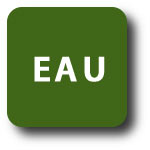MADRID, SPAIN (UroToday.com) - Treatment decisions for patients with small renal masses < 4cm are most challenging as these represent the best candidates for active surveillance (AS). Our group had previously reported that morphometrics, as captured by RENAL nephrometry score, possess diagnostic value in predicting pathologic characteristics in a heterogeneous cohort of renal masses. These findings have been externally validated by other groups in cohorts with tumor size up to 7 cm. In this study, we evaluated the strength of a nephrometry-based nomogram in predicting pathological characteristics of renal mass < 4 cm (T1a tumors).
 We queried our prospective Kidney Cancer Database for renal mass where NS was available. The individual components of nephrometry (endo/exophycity, nearness to sinus/urothelium, anterior/posterior, location relative to polar line and hilar structures) and the total NS were compared to pathological features (histology and grade) of resected tumors. Multiple logistic regressions were used to develop nomograms predicting the probability of cancer or the probability of high-grade tumors given the presence of cancer.
We queried our prospective Kidney Cancer Database for renal mass where NS was available. The individual components of nephrometry (endo/exophycity, nearness to sinus/urothelium, anterior/posterior, location relative to polar line and hilar structures) and the total NS were compared to pathological features (histology and grade) of resected tumors. Multiple logistic regressions were used to develop nomograms predicting the probability of cancer or the probability of high-grade tumors given the presence of cancer.
Of 855 patients who underwent renal surgery for T1a tumors between 2006 and 2014, 600 had RENAL nephrometry score, pathology, and grade available for analysis, with 17.3% of the tumors having benign pathology. Of malignant tumors, 33% were high-grade. Model covariates were age, sex, total nephrometry score, and E, N, and, L nephrometry components. Area under the curve was 0.72 for the benign vs malignant model and 0.57 for the high-grade vs low-grade model.
In conclusion, while the preoperative radiographic tumor complexity metrics possess moderate ability to differentiate between benign vs malignant pathology, ability to predict high vs low-grade disease in patients with SRM appears to be poor. As such, growth kinetics, clinical judgment, and appropriate use of renal biopsy must continue to drive critical decision-making with regard to active surveillance in patients with renal masses < 4cm.
Presented by Mohammed Haseebuddin, MD; Robert Uzzo, MD; Brian Egleston, PhD; Nikhil Wainganker, MD; Rosalia Viterbo, MD: Richard Greenberg, MD; David Chen, MD; Marc Smaldone, MD; and Alexander Kutikov, MD at the 30th Annual European Association of Urology (EAU) Congress - March 20 - 24, 2015 - IFEMA - Feria de Madrid - Madrid, Spain
Fox Chase Cancer Center, Philadelphia, PA
Reported by Mohammed Haseebuddin, MD, medical writer for UroToday.com


